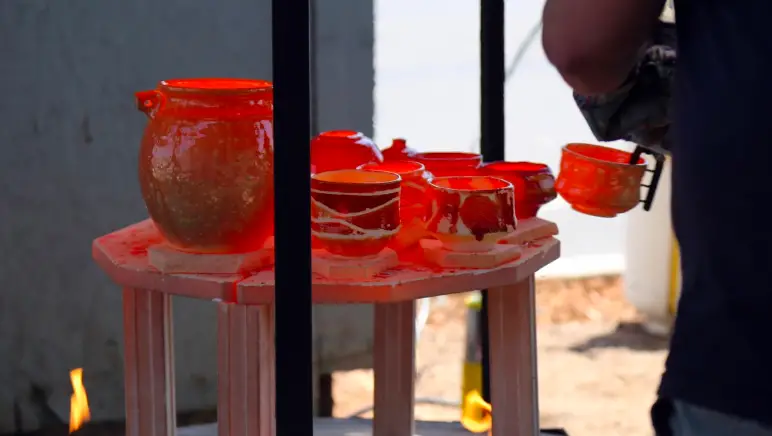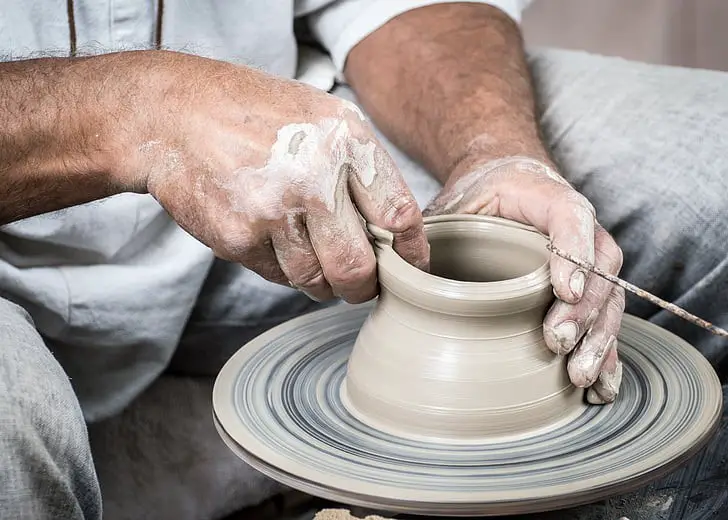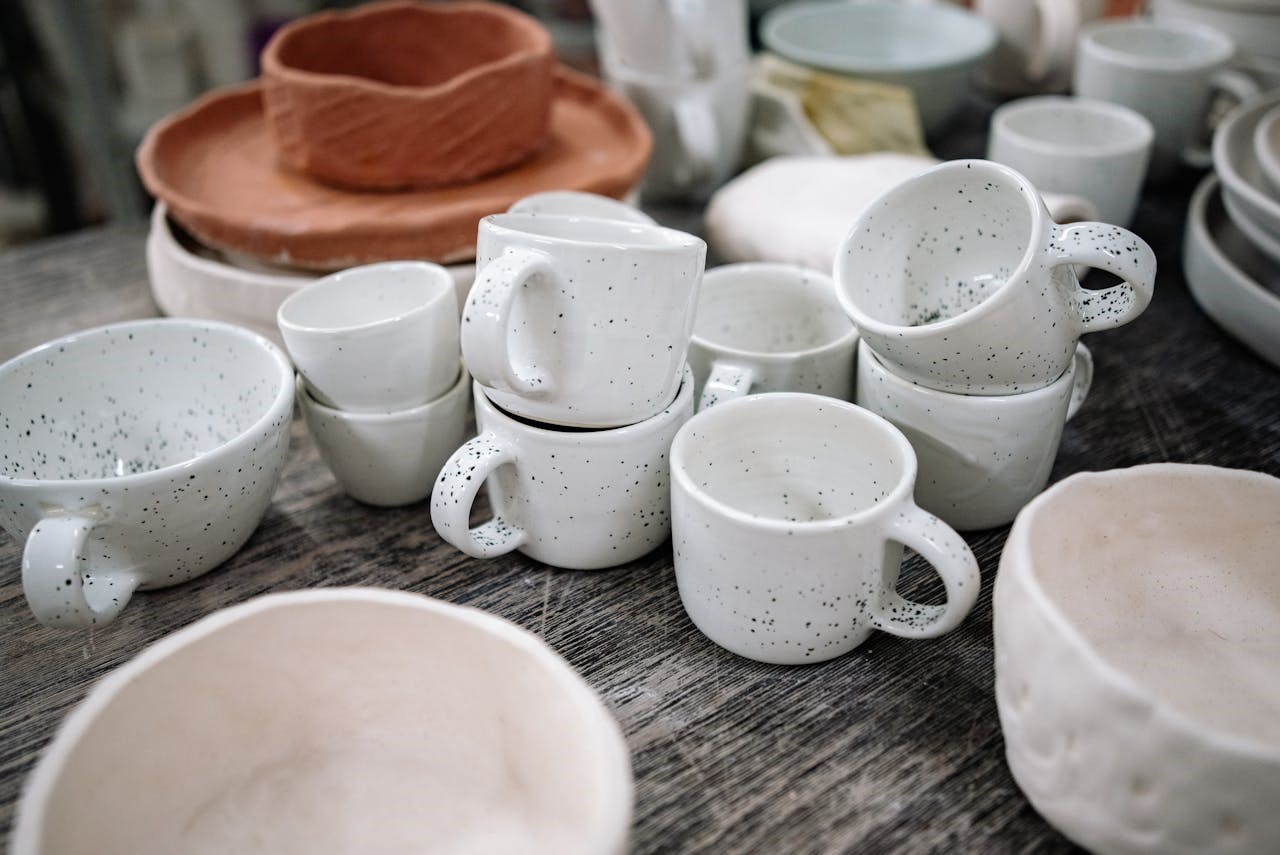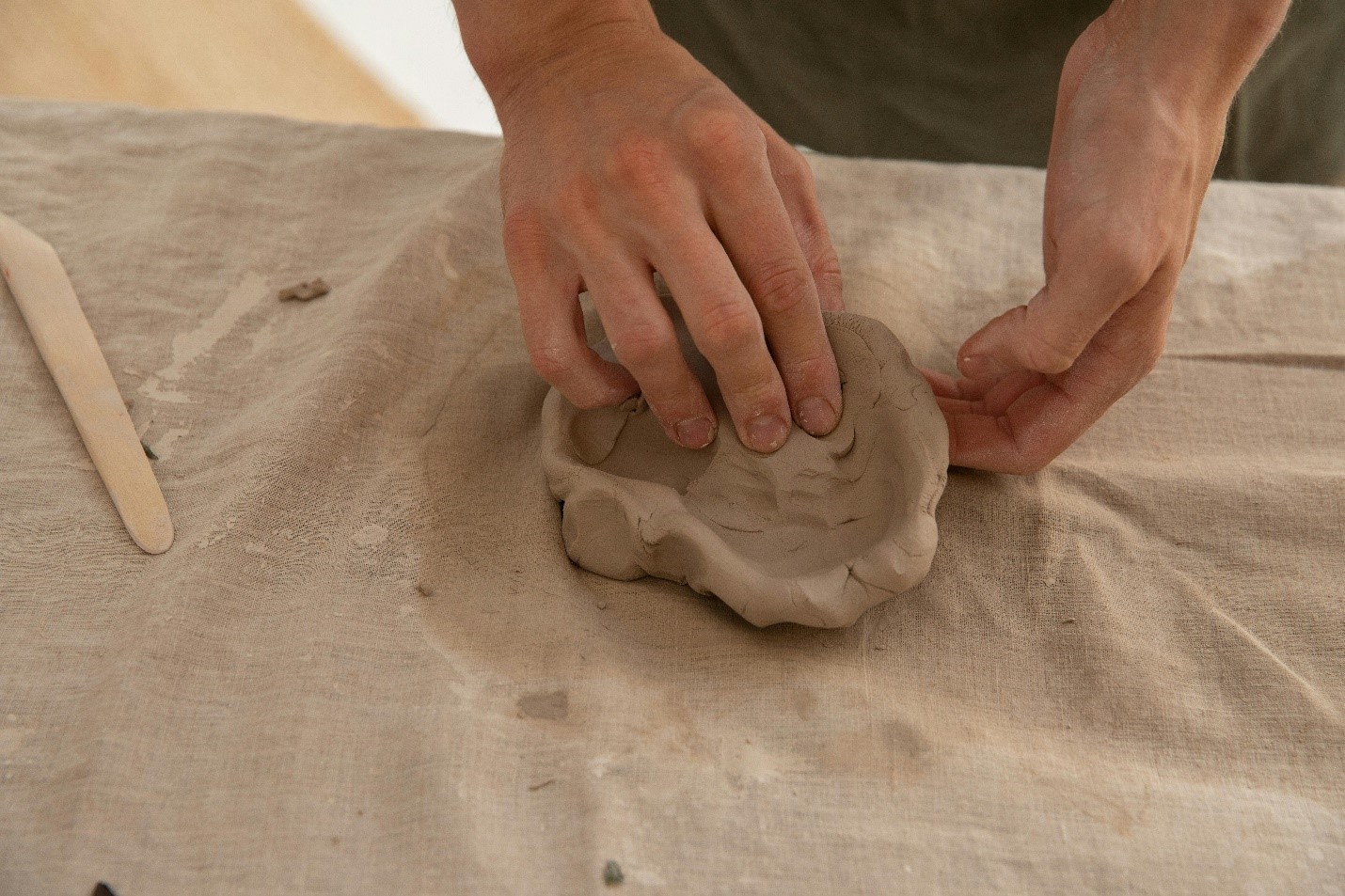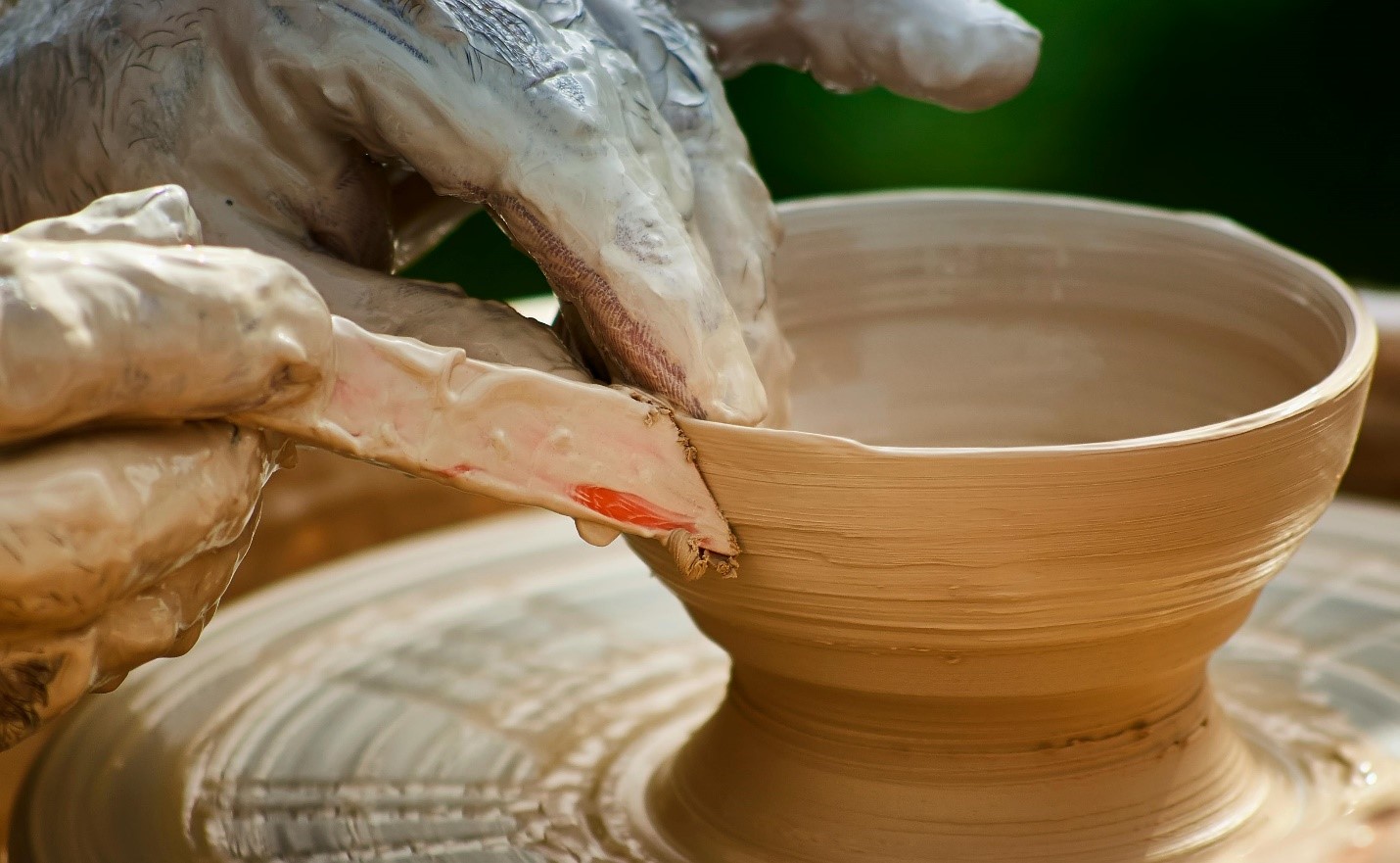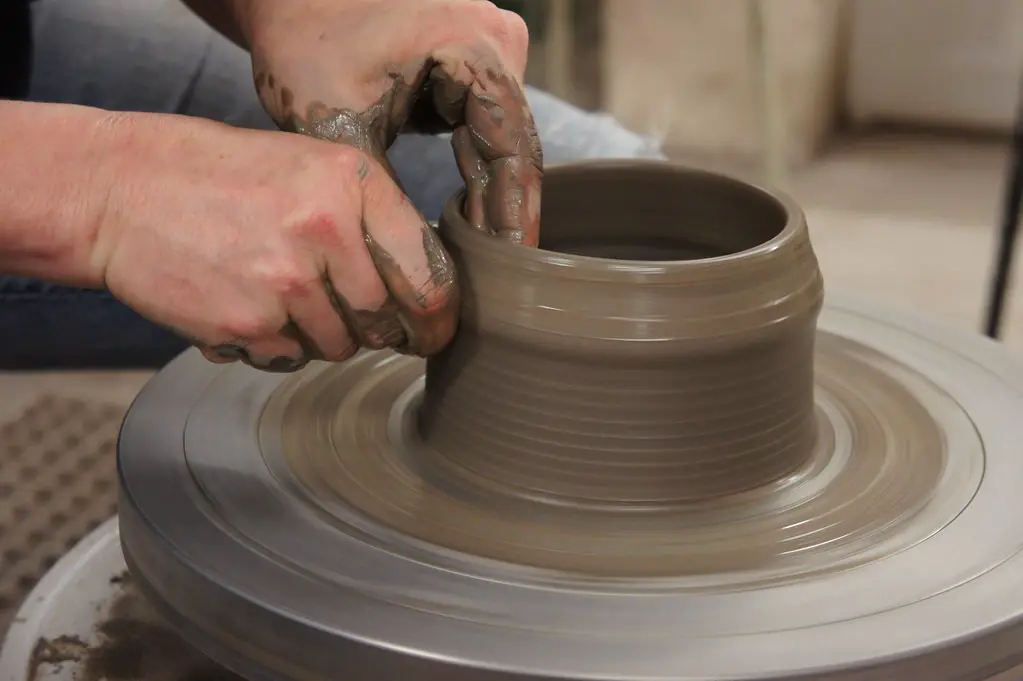When looking for a kiln, you are sure to ponder upon the arrays of options, especially between a ceramic or clay kiln. This article will help you choose between a ceramic and clay kiln based on what you want, what you are firing, and much more.
Pottery kilns usually have a lot of differences. Soon, you shall learn about the various facts that distinguish them and how you can understand these to make a good decision.
Gaining a Basic Understanding of Ceramic and Clay Kilns
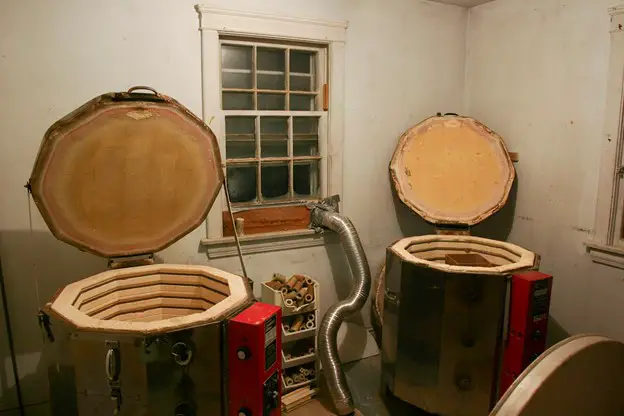
There are certain distinguishing factors between a ceramic kiln and a clay kiln. Before we delve into certain technicalities, let us gain a basic understanding of each of them:
1. Ceramic Kiln:
A ceramic kiln is a specialized oven or a furnace created for a high-temperature firing of ceramic objects, such as pottery, sculptures, tiles, and other creations. Kilns play a vital role in the ceramic creation by transforming raw items into durable pieces through controlled heating cycles.
Components:
- Chamber: The central compartment where ceramic is placed for firing.
- Kiln Furniture: These shelves, posts, and stilts support and separate pieces within the kiln.
- Heating Elements: Electric or gas-powered elements generate heat during the firing process.
- Control Panel: A panel that can regulate temperature, firing duration, and cooling cycles.
- Ventilation System: This facilitates control over the atmosphere inside the kiln by managing airflow and gas exchange.
Types: There are different types of ceramic kilns, including electric kilns, gas kilns, and wood-fired kilns, each with different characteristics.
Operation: Artists put their work into the kiln, set the proper firing parameters, and start the firing process. The kiln heats up, reaching specific temperatures based on the clay type and glazes used. After firing, the kiln cools down before the finished pieces can be removed.
2. Clay Kiln:
“Clay kiln” refers to a kiln for firing clay items. The clay kiln is a kiln dedicated to firing clay-based objects.
Components: Similar to the components of a ceramic kiln, a clay kiln would include a firing chamber, kiln furniture, heating elements, a control panel, and a ventilation system.
Types: As mentioned earlier, the kilns used for firing clay items are the same, i.e., electric kilns, gas kilns, and wood-fired kilns, depending on the artist’s or potter’s preferences and the desired outcome.
Operation: The operation of a clay kiln is quite similar to that of a ceramic kiln. You have to put in your work and set up the proper temperatures.
Conclusively, both ceramic and clay kilns encompass the same purpose but can have many differences, as we will see later in this article.
Factors that Differentiate Between Ceramic and Clay Kilns
Let’s take at some of the varying aspects that separate ceramic and clay kilns from one another.
1. Temperature Variations and Clay Handling:
Awareness of the intricate differences in temperature management and clay match significantly contributes to choosing the kiln you need to achieve certain ceramic pieces while following your artistic vision.
| Ceramic Kilns | Clay Kilns |
| Operate at higher temperatures up to 2000 degrees | Specialize in lower temperatures around 1100 degrees |
| Handle glazed pottery effectively | Ideal for low-firing clay |
| Can handle advanced firing | Limited to basic firings, fire risk at high temperatures |
| Better for porcelain clay | Better for earthenware |
It does not matter if you are creating mere clay pieces or elaborate pottery; you need to use a sculpting tool to refine the shape of your clay and even add designs to it in the process. For this purpose, the S & E TEACHER’S EDITION Pottery & Clay Sculpting Tools is one of the best tools to bring your artistic vision to life when dealing with clay items.
2. Price:
Pricing of the kiln is another factor in this regard, which has to be thoroughly scrutinized based on its available budget and other unique needs.
Clay Kilns
Clay kilns offer a cheaper alternative for low-budgeted individuals with basic firing necessities. They are generally very affordable devices that do not feature accurate programmable temperature control. Furthermore, their portability makes them an ideal practical option for potters wanting flexibility in their potting undertakings.
Ceramic Kilns
Unlike clay kilns, ceramic kilns cost much more, considering they are much bigger and stronger. These high costs incorporate added features like programmable settings, better temperature control, and higher working temperatures. Therefore, serious pottery hobbyists go for ceramic kilns as they are comprehensive functionally with high controls in firing processes. Buying a ceramic kiln shows dedication towards the art, providing quality technologies that an experienced user needs.
3. Kiln Size and Heating Layers:
Among the critical factors regarding kilns’ operational efficiency and adequacy for specific pottery purposes is their sizes. Understanding the differences in size and heating system is essential to selecting the suitable kiln for your artwork.
Clay Kilns
Clay kilns also tend to be smaller and carry only a few heavy loads. Such warehouses often have only one shelf suitable for hobby artists who produce small volumes of pottery and do not need large capacities. Clay kilns are usually made of one layer and have a predefined temperature. Despite their simple designs, they could still be good options for potters with relatively simple firing requirements.
Ceramic Kilns
Ceramic kilns are larger and more robust in comparison. With several shelves, they can carry large pots. Hobbyists have smaller production volumes, so you must be careful not to spend money on huge kilns. Ceramic kilns use several layers on the sides and are heated by the sides, not the top. Such design has more than one use: preventing cracking and breakage by distributing heat uniformly among various surfaces and layers within a building. Improved heating capacity enables the more significant transfer of heat into different layers, crucial for firing more complicated potteries.
Dimensions of size and heating capabilities are crucial considerations in choosing a suitable kiln. Make a better decision by determining the average size of your pottery work and the need for firing to get the correct result.
Selecting Between Ceramics and Clay: Considerations in Choosing a Kiln Matching Your Pottery Goals
Specific firing methods in the context of each ceramic and clay kiln need to be understood well before you decide on one for yourself. Here is some guidance on how you can choose one based on firing methods:
Ceramic Kiln for Versatility:
It is possible to fire ceramic kilns numerous times, making it appropriate for most pottery practices. The advantages of ceramics lie in the following:
- Glaze Firing: Glaze firing helps achieve a perfect finish for your pottery.
- Strength and Options: Ceramics can be used for extensive pottery by applying multiple layers that improve durability and expand glazing options.
Clay Kiln for Basic Pottery:
It is ideal as a beginner’s kiln or one more straightforward than others. Here’s why clay may be the right option for basic potters:
- Single-Fire Process: For beginners, a simple one-fire clay firing eases the process.
- Earthenware Focus: Clay-based kilns can be used with the appropriate type of simple and efficient firing for basic pottery requirements.
- Cost-Effective Starting Point: Mostly, they are less expensive, making them accessible as the essential points for those venturing into pottery.
Final Words
For beginners going through the process of working with clay but not high temperature or intricate firing procedures, start with clay. With this approach, you can learn the basic skills without the costlier purchase of a ceramic kiln. However, if you imagine an intense and pluralistic attitude toward the clay by using different burns through many media, a ceramic kiln will be quite enough for you.
The choice to get a ceramic or a baked clay kiln is based on your needs when you create ceramics in a certain way and expect specific firing capacities. Always keep information like average heating requirements, personal tastes, project complexity, and, most importantly, your budget at hand to make a decision that aligns with your artistic vision.

